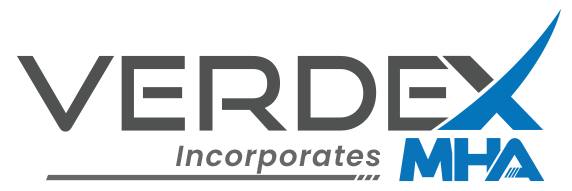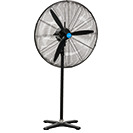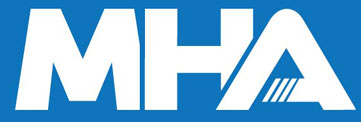Training and Certification Requirements for Lifting Equipment Operators
Date Posted:17 January 2025
By investing in proper training and ongoing education, businesses not only comply with regulatory requirements but also create a safer work environment, improve productivity, and reduce the risk of costly accidents.
Training and Certification Requirements for Lifting Equipment Operators
Operating lifting equipment safely and efficiently is vital in industries ranging from construction to logistics. Lifting equipment, such as cranes, forklifts, and scissor lifts, are essential for moving heavy loads, but if mishandled, they can pose serious safety risks. Proper training and certification for operators are critical to ensuring workplace safety, compliance with regulations, and optimal equipment performance.
In Australia, training and certification for lifting equipment operators are regulated to maintain safety standards and protect workers. In this blog, we’ll explore the importance of training, the various certification requirements, and how businesses can ensure that their lifting equipment operators are competent, qualified, and compliant.
Why Training and Certification Are Important
Lifting equipment operators play a significant role in workplace safety. These machines often handle heavy loads, which can cause serious injury or damage if mishandled. The key reasons why training and certification are important include:
1. Ensuring Safety: Improper operation of lifting equipment is a leading cause of workplace accidents, including crush injuries, falls, and accidents involving load instability. Training ensures operators know how to use equipment safely, perform risk assessments, and follow correct procedures for loading and unloading.
2. Minimising Damage to Equipment: Proper operation of lifting equipment extends its lifespan and ensures that machinery is used efficiently. Training teaches operators how to handle equipment in a way that reduces wear and tear and prevents damage.
3. Compliance with Legislation: Australian laws require that lifting equipment operators are trained and certified to ensure compliance with safety standards. Failure to comply with these regulations can result in legal consequences, including fines or business shutdowns.
4. Improving Efficiency: Properly trained operators can carry out tasks more efficiently, leading to increased productivity. When operators understand the capabilities and limitations of their equipment, they can use it more effectively and safely.
5. Reducing Workplace Costs: Investing in training can significantly reduce the likelihood of accidents, downtime, and equipment damage, all of which can be costly. Training is an investment that can help lower insurance premiums and improve the overall financial health of a business.
Types of Lifting Equipment and the Necessary Certifications
In Australia, there are various types of lifting equipment, each with specific training and certification requirements. The Australian government and regulatory bodies, such as Safe Work Australia and WorkSafe, have developed standards to ensure that operators are qualified to handle these machines.
1. Forklifts (LF)
Forklifts are one of the most commonly used pieces of lifting equipment, essential for transporting goods in warehouses, construction sites, and industrial environments.
Certification Requirement: To operate a forklift in Australia, operators must hold a Forklift (LF) Licence, which is issued by a registered training organisation (RTO) after completing the necessary training. The training includes both theoretical and practical components covering the safe operation of forklifts, load handling, manoeuvring in different environments, and compliance with safety standards.
• Course Duration: Typically 3-5 days, depending on the prior knowledge and experience of the learner.
• Training Content: Topics include workplace safety, operational procedures, load calculation, and emergency handling.
• Assessment: Both written and practical assessments are required.
2. Crane Operators (C0, C1, C2, and C6)
Crane operators are required for lifting heavy loads in construction, shipping, and manufacturing sectors. There are different types of crane licenses depending on the type of crane being operated.
Certification Requirements: In Australia, crane operators must hold a Crane License for specific crane types. The types of licenses available include:
• C0 Licence: For non-slewing cranes (mobile cranes).
• C1 Licence: For slewing mobile cranes up to 20 tonnes.
• C2 Licence: For slewing mobile cranes over 20 tonnes.
• C6 Licence: For slewing cranes with a lifting capacity greater than 100 tonnes.
Each crane type requires specific training tailored to the machine’s unique characteristics, such as stability, load charts, and operating procedures.
• Course Duration: Typically ranges from 5-10 days, depending on the crane type and licence level.
• Training Content: This includes crane setup, safety procedures, load charts, and rigging techniques.
• Assessment: Both written and practical exams are conducted to ensure competency.
3. Elevated Work Platforms (WP)
Elevated Work Platforms (EWPs) are used for tasks such as high-level construction work, maintenance, and window cleaning. The operator must be aware of the machine’s stability, capacity limits, and safe operating practices.
Certification Requirement: The EWP operator must complete a Work Platform (WP) Licence course, which covers various types of platforms, including scissor lifts and boom lifts.
• Course Duration: Typically 1-2 days.
• Training Content: Includes safe operation, hazard identification, correct usage, and rescue procedures.
• Assessment: A practical demonstration of EWP operation is required, along with a theoretical test.
4. Rigging and Slinging
Rigging is often an essential skill for lifting equipment operators, particularly when using cranes, hoists, or other equipment that requires the secure attachment of loads.
Certification Requirements: Operators involved in rigging tasks need a Rigging Licence, which ensures that they can safely lift, move, and support heavy loads using ropes, slings, and chains.
• Course Duration: A typical rigging course lasts around 5-10 days.
• Training Content: Includes the correct use of slings, load calculations, rigging techniques, and safety protocols.
• Assessment: Both practical and written tests are required.
Ongoing Training and Refresher Courses
Even after obtaining certification, operators must participate in ongoing training to ensure they remain up-to-date with the latest safety practices, equipment advancements, and regulatory changes. Refresher courses help reinforce the operator’s understanding of safety standards and operational procedures.
• Frequency: Refresher training is recommended every 3 to 5 years, depending on the type of equipment.
• Content: These courses often focus on updated safety standards, changes in regulations, and newer technologies in lifting equipment.
Responsibilities of Employers
While training and certification are crucial for operators, employers also have responsibilities to ensure a safe working environment. Employers must:
1. Provide Training: Employers must ensure their operators are adequately trained and certified before operating lifting equipment.
2. Maintain Equipment: Employers are responsible for the regular maintenance and safety checks of the lifting equipment to ensure it is safe to use.
3. Monitor Operator Competence: Regularly assess operators to ensure they remain competent in their roles.
4. Follow Workplace Safety Standards: Employers must ensure compliance with Australian safety standards, such as the Work Health and Safety (WHS) Act, which includes provisions on lifting operations and worker safety.
Training and certification for lifting equipment operators are essential for maintaining safety, compliance, and operational efficiency in any industry where lifting equipment is used. Whether operating forklifts, cranes, or elevated work platforms, operators must be adequately trained and hold the appropriate licences to handle these machines safely and effectively.
By investing in proper training and ongoing education, businesses not only comply with regulatory requirements but also create a safer work environment, improve productivity, and reduce the risk of costly accidents.
For employers, ensuring that lifting equipment operators are properly trained and certified is an investment in both safety and operational success. By adhering to the necessary training and certification standards, businesses can maintain a safe and efficient workplace while meeting legal obligations and environmental goals.
































































































































 Trolleys & Hand Trucks
Trolleys & Hand Trucks Cage Trolleys
Cage Trolleys Cleaning Carts & Trolleys
Cleaning Carts & Trolleys Construction Trolleys
Construction Trolleys Custom Trolleys
Custom Trolleys Hand Trucks & Dollies
Hand Trucks & Dollies Laundry/Linen Trolleys
Laundry/Linen Trolleys Lifting Trolleys
Lifting Trolleys Order Picking Trolleys
Order Picking Trolleys Panel Cart Trolleys
Panel Cart Trolleys Platform Trolleys
Platform Trolleys Powered Trolleys
Powered Trolleys Shelf & Tiered Trolleys
Shelf & Tiered Trolleys Shopping Trolleys
Shopping Trolleys Stainless Steel Trolleys
Stainless Steel Trolleys Tool Trolleys
Tool Trolleys Utility & Service Carts
Utility & Service Carts Lifting & Handling Equipment
Lifting & Handling Equipment Forklift Attachments
Forklift Attachments Jib Attachments
Jib Attachments Lifting Hoists & Pallet Hooks
Lifting Hoists & Pallet Hooks Load Skates & Tow Tugs
Load Skates & Tow Tugs Manual Stackers & Lifters
Manual Stackers & Lifters Pallet Jacks
Pallet Jacks Pallet Lifters
Pallet Lifters Pallet Rotators & Dispenser
Pallet Rotators & Dispenser Powered Pallet Trucks & Electric Lifters
Powered Pallet Trucks & Electric Lifters Scissor Lift Trolleys and Tables
Scissor Lift Trolleys and Tables Conveyor Equipment
Conveyor Equipment Conveyor Frames & Stands
Conveyor Frames & Stands Roller & Skate Conveyors
Roller & Skate Conveyors Ladders & Access Equipment
Ladders & Access Equipment Container & Yard Ramps
Container & Yard Ramps Ladders & Step Stools
Ladders & Step Stools Work Platforms & Crane Cages
Work Platforms & Crane Cages Drum Handling Equipment
Drum Handling Equipment Drum Storage & Bunding
Drum Storage & Bunding Drum Trolleys & Lifters
Drum Trolleys & Lifters Forklift Drum Handling
Forklift Drum Handling Waste Handling & Bins
Waste Handling & Bins Bin Lifters & Tippers
Bin Lifters & Tippers Plastic Waste & Wheelie Bins
Plastic Waste & Wheelie Bins Steel Waste & Tipping Bins
Steel Waste & Tipping Bins Waste Carts
Waste Carts Dangerous Goods Storage & Spillage
Dangerous Goods Storage & Spillage Aerosol Cans Storage Cages
Aerosol Cans Storage Cages Bunded Pallets & Storage
Bunded Pallets & Storage Corrosive Goods Storage Cabinets
Corrosive Goods Storage Cabinets DG Storage & Trolleys
DG Storage & Trolleys Flammable Liquid Cabinets
Flammable Liquid Cabinets Forklift Gas Storage Cages
Forklift Gas Storage Cages Site Storage
Site Storage Spill Kits
Spill Kits Shelving & Storage Equipment
Shelving & Storage Equipment Stillage & Transport Cages
Stillage & Transport Cages 750 Series Cage Configurations
750 Series Cage Configurations Heavy Duty Cabinets
Heavy Duty Cabinets Heavy Duty Shelving
Heavy Duty Shelving Mega Bins & Pallets
Mega Bins & Pallets Packing & Workbenches
Packing & Workbenches Parts Trays & Stor-Pak Bins
Parts Trays & Stor-Pak Bins Pegboard & Louvre Panels
Pegboard & Louvre Panels Plastic Bins & Crates
Plastic Bins & Crates Plastic Handling Solutions Bins
Plastic Handling Solutions Bins Plastic Pallets
Plastic Pallets Stack & Nest Bins
Stack & Nest Bins Pallet Racking Accessories
Pallet Racking Accessories Workplace Equipment
Workplace Equipment Modular Workbenches
Modular Workbenches Electric Height-Adjustable Workbenches
Electric Height-Adjustable Workbenches Floor Matting
Floor Matting General Workplace Equipment
General Workplace Equipment Industrial Weighing Scales
Industrial Weighing Scales Packaging Machinery
Packaging Machinery Stationery Cupboards
Stationery Cupboards Storage and Stillage Cages
Storage and Stillage Cages Tool Trolleys
Tool Trolleys Tooling Cabinets
Tooling Cabinets Workshop Fans and Coolers
Workshop Fans and Coolers Safety Barriers, PPE & Signage
Safety Barriers, PPE & Signage Barriers & Bollards
Barriers & Bollards First Aid Equipment
First Aid Equipment Gloves, Knives and PPE
Gloves, Knives and PPE Signage
Signage Cleaning & Site Supplies
Cleaning & Site Supplies Cleaning Equipment
Cleaning Equipment Cleaning Trolleys
Cleaning Trolleys Rubbish Bins
Rubbish Bins Signs & Traffic Supplies
Signs & Traffic Supplies Construction Equipment
Construction Equipment Construction Trolleys
Construction Trolleys Waste Handling
Waste Handling General Site Equipment
General Site Equipment Concrete Equipment
Concrete Equipment Site Storage
Site Storage Lifting Equipment
Lifting Equipment Verdex Specials
Verdex Specials









